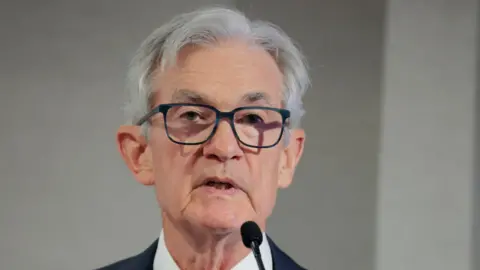On April 23, 2025, U.S. President Donald Trump publicly reaffirmed his position regarding Jerome Powell, the Chair of the Federal Reserve, declaring that he has “no intention of firing” him despite a history of sharp criticism. This announcement was made during an interaction with reporters, aiming to clarify Trump’s sentiments amidst ongoing discussions about monetary policy and interest rates.
President Trump indicated his desire for Powell to take a more aggressive stance in cutting interest rates. His remarks reflect a growing frustration with the Fed’s current monetary policy, particularly after he labeled Powell as “a major loser” in the previous week. This particular choice of words contributed to market volatility, leading to declines in stock prices, bond values, and the U.S. dollar. However, it is noteworthy that financial markets have shown signs of recovery in the aftermath of these events.
The Federal Reserve had not implemented any rate cuts thus far in the year, following a significant reduction of one percentage point that occurred in late 2024. Trump’s comments indicate a continuing pressure on the Fed, which is traditionally expected to operate independently from political influence. Recently, Kevin Hassett, the Director of the National Economic Council, had suggested that the president might be contemplating the feasibility of removing Powell, adding another layer of speculation to the tumultuous relationship between the administration and the central bank.
In conjunction with the discussions surrounding interest rates, Trump also expressed a cautiously optimistic outlook regarding trade negotiations with China. He stated that he planned to approach talks with “great care” and noted that tariffs would decrease if a deal was achieved. However, he clarified that tariffs would not vanish entirely, implying that some trade barriers could remain in place even after a potential agreement.
Supporting Trump’s optimism, U.S. Treasury Secretary Scott Bessent conveyed that he anticipated a reduction in trade hostilities with China, characterizing the current climate as unsustainable. These statements seemed to resonate positively with market participants, as evidenced by a surge in major stock indices on the following trading day. The Nikkei 225 of Japan experienced an increase of approximately 1.9%, the Hang Seng Index in Hong Kong rose by around 2.4%, and the Shanghai Composite of mainland China climbed just over 0.1%.
In U.S. markets, the response was even more pronounced. The S&P 500 index surged by 2.5%, while the Nasdaq saw a gain of 2.7% on Tuesday, signaling investor confidence in Trump’s comments about trade and monetary policy adjustments. Furthermore, U.S. stock futures indicated a positive trajectory as trading resumed the next day, reflecting an optimistic anticipation among investors.
Investor sentiment has been significantly influenced by fears surrounding the pressure on Powell to lower interest rates, especially at a time when trade tariffs are already believed to be contributing to inflationary pressures. The ongoing uncertainties tied to trade disputes between the U.S. and other global powers have exacerbated this market volatility, creating a cautious atmosphere among financial professionals and everyday investors alike.
The interplay between Trump’s administration and the Federal Reserve continues to be a focal point for market watchers. As discussions about interest rates persist and tensions around trade policies remain, stakeholders from various sectors keep a keen eye on the developments that could shape the economic landscape in the near future. The potential for changes in fiscal policy, intertwined with the complexities of foreign trade relationships, promises to keep the financial markets in a state of flux in the coming months.



